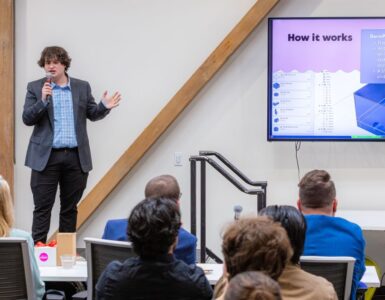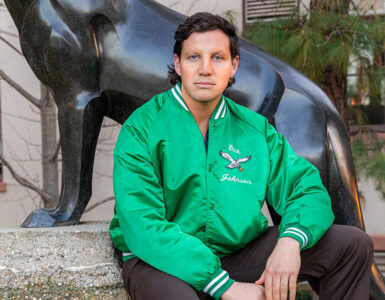For an international contest, two Chapman University students had to envision the product market of 2050 and develop something perfect for the times. They chose an innovation with sticking power.
They imagined a world in which soy byproducts get a new life as a resilient adhesive with “off-on” properties making it especially valuable in a hospital setting. Their futuristic thinking helped them become the only college team from North America chosen to compete in the finals of the Henkel Innovation Challenge.
MBA candidate Elise Drakes ’13 and MBA/M.S. food science candidate Greg Yudin ’14 will travel to Shanghai, China, on March 17 to compete against 25 other teams from around the world. Their challenge will be to prove to Henkel judges that their product, which they’ve dubbed “Pattex Hercules,” is the most sustainable and valuable idea out there and could be market ready by 2050. The grand prize is a trip around the world worth 10,000 euros (about $13,000).
The Chapman students’ idea was borne out of their respective backgrounds. Drakes works for an architectural firm specializing in meeting health care needs, such as safely securing wheeled equipment.
“This would protect people from things that could harm them in an earthquake,” Drakes says.
As a food science student, Yudin has researched emerging technology targeting the effort to make a powerful soy-based adhesive.
“The technology is not theoretical,” Yudin says.
But true to the Henkel challenge, the two had to give their product a next-step futuristic application. Enter the “on-off” idea. They envision their adhesive having elements that would somehow be responsive to a smart device. Click once and the equipment is anchored; click again and it’s mobile.
Now, what might a smart device look like in 2050? Well, that’s a whole other challenge.





Congratulations to you both – represent well!
And have fun.